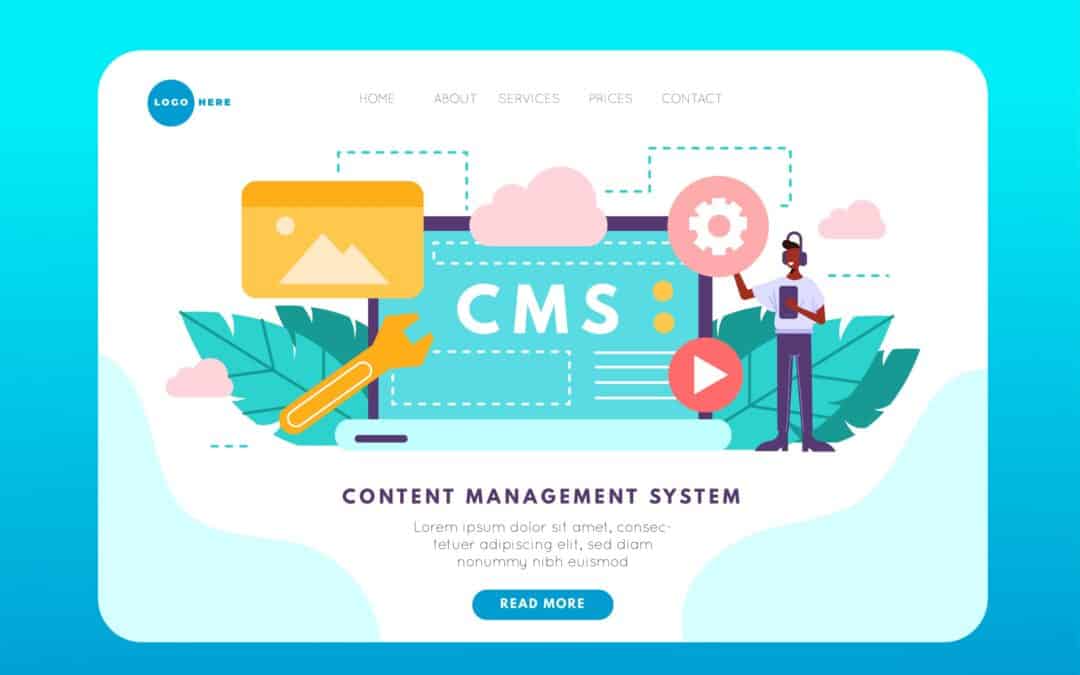For web application development, it’s essential to choose the right programming language that is scalable, meets job market demands, and is easy to maintain. Selecting the right language not only impacts project success but also influences career growth. It also depends on the career path you want to pursue, whether as a frontend developer, backend developer, or full-stack developer. Each language has its own limitations and frameworks.
In this blog we will explore the best programming languages to learn for web application development.
What is Web Development languages?
The term “web development languages” refers to programming languages used to design and build websites and web applications, including HTML, CSS, JavaScript, PHP, Java, C#, Python, and others.Web development is a vast domain, further divided into three subdomains: frontend development, backend development, and full-stack development.
Front-End Development: Focuses on the visual and interactive parts of a website, using programming languages like HTML, CSS, JavaScript, React, and Angular.
Back-End Development: Works on server-side logic, databases, and APIs, utilizing programming languages such as Python, Java, Ruby, PHP, Node.js, and SQL.
Full-Stack Development: Handles both front-end and back-end development by working with a combination of front-end and back-end technologies
Top 10 Web Development Languages
Best Web Development Languages includes Javascript,python, Go (Go lang), PHP, Ruby, Java, C#, TypeScript, Kotlin and Swift.
Best Programming Languages for Web Application Development
| Language | Category | Key Features |
| JavaScript | Front-End, Full-Stack | Runs in browsers, used for both client & server (Node.js) |
| Python | Back-End, Full-Stack | Easy to learn, powerful libraries (Django, Flask) |
| PHP | Back-End | Web-specific, widely used for CMS & dynamic sites |
| TypeScript | Front-End | JavaScript superset, type safety, scalable apps |
| Ruby | Back-End, Full-Stack | Developer-friendly, rapid development (Rails) |
| Java | Back-End | Secure, high-performance, enterprise-level applications |
| C# | Back-End, Full-Stack | Strong for enterprise web apps, works with .NET |
| Go (Golang) | Back-End | Fast execution, concurrency support, efficient for APIs |
| Swift | Back-End | Optimized for Apple ecosystem, secure, modern syntax |
| Kotlin | Back-End, Full-Stack | Java alternative, concise, used with Spring Boot (Ktor) |
Let’s explore every language in detail.
1. JavaScript
JavaScript is a scripting language primarily used for adding interactive features to web pages. It runs in web browsers and can also be used for server-side development with Node.js.
Key Features:
- Client-Side and Server-Side: Works in browsers and also on servers with Node.js.
- Asynchronous Programming: Supports callbacks, promises, and async/await for handling multiple tasks efficiently.
- Huge Ecosystem: Has numerous libraries and frameworks like React, Angular, and Vue.js for front-end development.
- Lightweight and Fast : Executes directly in the browser without needing compilation.
Limitations:
- Security Issues: Vulnerable to cross-site scripting (XSS) and other security risks if not managed properly.
- Performance Limitations: Not suitable for heavy computations or large-scale applications.
- Browser Compatibility: Different browsers may interpret JavaScript code differently, causing inconsistencies.
- Loose Typing: Since JavaScript is dynamically typed, errors may only appear during execution, making debugging harder.
2. Python
Python is a high-level, interpreted programming language known for its simplicity and readability. It is widely used in web development, artificial intelligence, and automation.
Key Features:
- Easy to Read and Write: Uses a simple and clean syntax, making it beginner-friendly.
- Strong Web Frameworks: Django and Flask provide powerful tools for building web applications.
- Dynamically Typed: Variables don’t need to be declared with a specific type.
- Large Standard Library: Includes built-in modules for handling files, databases, and network communication.
Limitations:
- Slower Execution Speed : Since Python is interpreted, it runs slower compared to compiled languages like Java or C++.
- Not Ideal for Mobile Apps : Python is not widely used for mobile application development.
- High Memory Usage : The flexibility of Python comes at the cost of higher memory consumption.
- Dynamic Typing Issues: Errors can occur at runtime due to the absence of strict variable type enforcement.
3. PHP
PHP is a server-side scripting language specifically designed for web development. It powers many websites, including WordPress-based sites.
Key Features:
- Specialized for Web Development : Built primarily for server-side scripting.
- Easy Database Integration : Works well with MySQL and other databases.
- Platform Independent : Can run on Windows, macOS, and Linux servers.
- Large Community Support :Extensive documentation and community-driven resources.
Limitations:
- Slower than Other Languages : PHP is interpreted, making it slower than languages like Java or C#.
- Security Vulnerabilities : If not properly coded, PHP applications are prone to SQL injection and XSS attacks.
- Not Suitable for Large Applications : It lacks strong modularity features for enterprise-scale applications.
- Messy Codebase: Older PHP versions encourage unstructured coding practices.
4. TypeScript
TypeScript is a superset of JavaScript that introduces static typing, making code more reliable and scalable.
Key Features:
- Static Typing : Reduces runtime errors by catching them during development.
- Object-Oriented : Supports classes and interfaces for better code organization.
- Improved JavaScript : Works with all JavaScript libraries and frameworks.
- Better Tooling : Provides advanced features like autocompletion and debugging support.
Limitations:
- Learning Curve : Developers familiar with JavaScript need time to adjust.
- Requires Compilation : Unlike JavaScript, TypeScript code must be compiled before execution.
- Complex for Small Projects : Overhead is unnecessary for simple applications.
- Limited Browser Support : Browsers cannot run TypeScript directly without transpiling it to JavaScript.
5. Ruby
Ruby is an object-oriented programming language known for its simplicity and productivity. It is commonly used with the Ruby on Rails framework for web development.
Key Features:
- Easy to Read and Write : Uses an intuitive syntax similar to English.
- Ruby on Rails : A popular web development framework that simplifies coding.
- Metaprogramming : Allows modifying classes and methods dynamically.
- Strong Community Support : Large ecosystem of gems (pre-built libraries).
Limitations:
- Slower Execution : Ruby is slower compared to languages like Java or Go.
- Less Popular for Large Applications : Fewer enterprise-level projects use Ruby.
- Memory Intensive : Consumes more resources than other languages.
- Declining Popularity :Some developers are shifting to other frameworks like Django or Node.js.
6. Java
Java is a high-performance, object-oriented programming language commonly used for enterprise-level web applications.
Key Features:
- Platform Independent : Runs on any system using the Java Virtual Machine (JVM).
- Secure and Robust : Strong memory management and security features.
- Multi-Threading Support : Handles multiple processes efficiently.
- Scalable : Used in large-scale web applications.
Limitations:
- Verbose Syntax : Requires writing more code compared to modern languages.
- Higher Memory Usage : Uses more RAM and processing power.
- Slow Startup Time : Java applications take longer to initialize.
- Complex for Beginners : Harder to learn compared to Python or JavaScript.
7. C#
C# is an object-oriented programming language developed by Microsoft, mainly used for enterprise applications and web development with .NET.
Key Features:
- Works with .NET : Fully integrated with Microsoft’s .NET framework.
- High Performance : Faster execution compared to interpreted languages.
- Strongly Typed : Reduces errors and improves code reliability.
- Great for Enterprise Apps : Widely used for business software.
Limitations:
- Windows-Centric : Works best with Microsoft technologies.
- Less Popular for Web : Not the first choice for many web developers.
- Higher Resource Consumption : Uses more memory and processing power.
- Steeper Learning Curve : Harder to learn compared to Python or JavaScript.
8. Go (Golang)
Go is a modern programming language developed by Google, designed for fast execution and high concurrency.
Key Features:
- High Speed : Compiled language with excellent performance.
- Built-in Concurrency : Handles multiple processes efficiently.
- Simple and Clean Syntax : Easy to read and maintain.
- Ideal for APIs : Used for building scalable web services.
Limitations:
- Smaller Ecosystem : Fewer libraries compared to Java or Python.
- Not Ideal for UI Development : Mainly used for backend services.
- Lack of Generics : Code duplication is common.
- Learning Curve : Requires understanding concurrent programming concepts.
9. Swift
Swift is a programming language developed by Apple, primarily for building iOS and macOS applications, but also used in server-side development.
Key Features:
- Fast and Secure : Optimized for Apple devices.
- Easy to Read : Modern and clean syntax.
- Memory Management : Uses automatic reference counting (ARC).
- Vapor Framework : Supports server-side web development.
Limitations:
- Apple-Centric : Not widely used outside the Apple ecosystem.
- Smaller Community : Fewer resources compared to Java or Python.
- Limited Adoption in Web : Not a primary choice for general web development.
- Frequent Updates : Requires constant adaptation to new versions.
10. Kotlin
Kotlin is a modern, statically typed programming language that runs on the Java Virtual Machine (JVM). It is designed to be fully interoperable with Java and is widely used for Android development, web applications, and backend services.
Key Features:
- Interoperability with Java: Can seamlessly work with existing Java code and libraries.
- Concise and Expressive: Reduces boilerplate code compared to Java while maintaining readability.
- Null Safety: Eliminates null pointer exceptions by distinguishing nullable and non-nullable types.
- Coroutines for Asynchronous Programming: Provides lightweight threads to handle concurrency efficiently.
- Multi-Platform Support: Can be used for Android, web (via Kotlin/JS), and backend development (via Kotlin/Native).
Limitations:
- Compilation Speed: Slower than Java in some cases, especially for clean builds.
- Learning Curve: While simpler than Java, it still requires learning new concepts like coroutines and extension functions.
- Smaller Community Compared to Java: Though growing, Kotlin’s ecosystem is not as vast as Java’s.
- Limited Resources: Fewer learning materials and libraries compared to older languages like Java.
Conclusion:
The best programming language for web application development depends on your project needs, career goals, and existing knowledge. JavaScript remains essential for front-end and full-stack development, while Python is great for backend services and data-driven applications. Java and C# are strong choices for enterprise-level applications, whereas Kotlin is gaining traction for modern web and mobile solutions. If you prioritize speed and scalability, Go and Rust are worth considering. Ultimately, the best language is the one that aligns with your development goals and industry demands.





